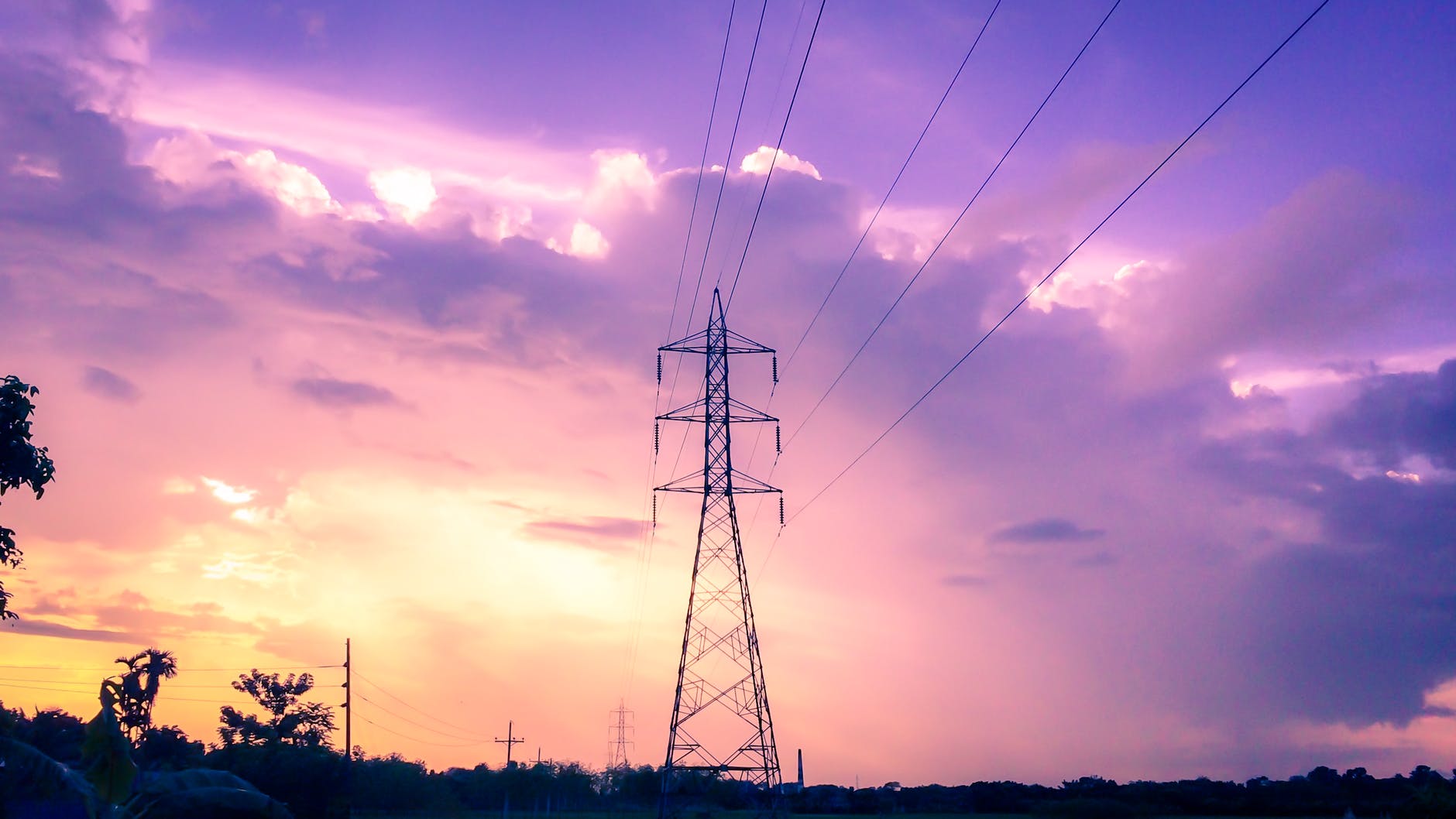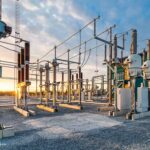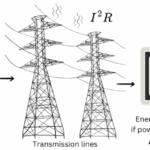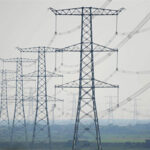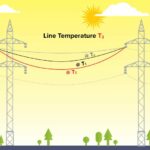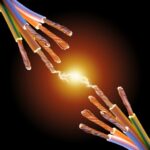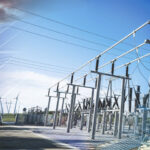The Proliferation of Personal Computers (PCs), Programmable Logic Controllers (PLCs), Energy Management Systems (EMS), Microprocessor based instrumentation, and other state-of-the-art electronic devices in an industrial plant setting has prompted a new awareness of the impact of Power Line Disturbances (PLD) on the reliability of these systems and the ability to perform the desired tasks in an interruption-free manner. While it is common to consider the local power company as the source of all PLD problems, investigation has revealed that in many cases a significant portion originate in the plant itself, from adjustable speed drives, heater and lighting controls, copy machines, and even the switching power supplies of computers and controllers themselves. This chapter reviews the various types of power line disturbances and their possible sources.
2.1. Specifications
Specifications for commercial and industrial power are adequate for operating motors, heaters, and lighting, which constitute more than 95% of the load base. Electronic loads require cleaner power. Power quality disturbances such as voltage sags, surges, and impulses; faults in the shape of the voltage sine wave; high frequency noise; harmonics; and frequency errors can all cause intermittent failures of electronic loads. These same power disturbances can also shorten the expected life of an electronic device by causing increased heating and higher electrical stress.
Although it is technically possible to construct electronic loads that tolerate virtually any kind of power quality disturbance, the cost of construction makes this approach impractical. For example, in a typical electronic instrument the power supply is 5% of the cost; but in power disturbance monitoring instrument designed to tolerate almost any power disturbance, the power supply’s cost rises to as much as 30%.
It is also possible to construct Power conditioning systems that clean up power before it is Wired to the electronic load and eliminate virtually all power disturbances. This approach is costly and is effective only when the load is concentrated in one physical location (such as a room dedicated to a mainframe computer). It is more difficult and even more costly when the loads are distributed throughout the building or entire Industrial plant facility.
2.2 Responsibility for power quality
The end-user is responsible for providing an acceptable operating environment for the electronic load. His perception of his responsibility is distorted by two factors: sales implications that the equipment will operate from “ordinary” power, and the premise that it is the equipment field service organization’s responsibility to keep his system running.
Many electronics suppliers have a weak or non-existent pre-site inspection requirement, even to the point of stating their electronic loads will operate from “Standard” power. This may be phrased as “Office power,” “a Standard outlet,” or even “a Dedicated circuit.” Other suppliers explicitly state their power requirements, including tolerance levels for common power quality faults; however, explicit power quality requirements are virtually impossible to measure unless the end-user or field service engineer is equipped with the proper training, procedures, and instrumentation.
2.3 Power line disturbances – cause and effect
One of the biggest obstacles facing anyone attempting to understand power line transient phenomena is the language itself, A great deal of jargon is used in the Engineering profession and in the instrumentation and computer industry to describe power line disturbances. Also, if any action plan is to be formulated to deal with these disturbances, it is important to know something about their sources and the effects they have on equipment and computer hardware.
3. Reliability indices
The Electric utility industry is moving toward a deregulated, competitive environment where utilities must have accurate information about system performance to ensure that maintenance dollars are spent wisely and that customer expectations are met.
To measure system performance, the electric utility industry has developed several performance measures of reliability. These reliability indices include measures of outage duration, frequency outages, system availability, and response time.
System reliability is not the same as power quality. System reliability pertains to sustained interruptions and momentary interruptions. Power quality involves voltage fluctuations, abnormal waveforms, and harmonic distortions. An interruption of greater than five minutes is generally considered a reliability issue, and interruptions of less than five minutes are a power quality concern.
3.1 Variables affecting reliability indices
- Longer circuits lead to more interruptions. It is easier to provide higher reliability in urban areas; line lengths are shorter.
- The distribution supply configuration greatly impacts reliability. Long radial lines provide the poorest service; Grid networks are exceptionally reliable
- Higher primary voltages tend to be more unreliable, mainly because of longer lines.
The most widely used reliability indexes are SAIFI, CAIDI and SAIDI
- SAIFI(System Average Interruption Frequency Index) indicates the average number of outages for the system over a specified time period.
- CAIDI (Customer Average Interruption Duration Index) indicates the average duration of a single outage.
- SAIDI (System Average Interruption Duration Index) indicates the average outage duration for the system over a specified time period.
3.2 System Average Interruption Duration Index (SAIDI)
The most often used performance measurement for a sustained interruption is the System Average Interruption Duration Index (SAIDI). This index measures the total duration of an interruption for the average customer during a given time period. SAIDI is normally calculated on either monthly or yearly basis; however, it can also be calculated daily, or for any other time period.
To calculate SAIDI, each interruption during the time period is multiplied by the duration of the interruption to find the customer-minutes of interruption. The customer-minutes of all interruptions are then summed to determine the total customer-minutes. To find the SAIDI value, the customer-minu
tes are divided by the total customers.
The formula is,
Where,
![]() = Restoration time, minutes
= Restoration time, minutes
![]() = Total number of customers interrupted
= Total number of customers interrupted
![]() = Total number of customers served
= Total number of customers served
3.3 Customer Average Interruption Duration Index (CAIDI)
Once an outage occurs the average time to restore service is found from the customer average interruption duration index (CAIDI). CAIDI is calculated similar to SAIDI except that the denominator is the number of customers interrupted versus the total number of utility customers. CAIDI is,
![]()
Where,
![]() = Restoration time, minutes
= Restoration time, minutes
![]() = Total number of customers interrupted
= Total number of customers interrupted
3.4 System Average Interruption Frequency Index (SAIFI)
The system average interruption frequency index (SAIFI) is the average number of times that a system customer experiences an outage during the year (or time period under study). The SAIFI is found by divided the total number of customers interrupted by the total number of customers served. SAIFI, which is a dimensionless number, is
![]()
Where,
![]() = Total number of customers interrupted
= Total number of customers interrupted
![]() = Total number of customers served
= Total number of customers served
4. Voltage unbalance
A voltage variation refers to any change or swing in steady-state voltage above or below the prescribed input range for a given piece of equipment. Voltage variations include brownouts, which are intentional reductions by the utilities to conserve energy for a specific period of time. Voltage variations result in improper function of logic and memory circuits, and overheating in the case of voltage increases. Voltage variations are caused by unregulated utility feeders that experience changes in load over a period of time. Sometimes they may occur when utilities switch their system to change the way a particular customer is served, Voltage variations may also frequently occur within a building or industrial plant due to load changes occurring within the premises, even when the utility voltage is constant, and even in cases when on site power generation exists.
5. Harmonic distortion
One of the greatest causes of harmonic distortion in today’s power systems is SCR switching. This distortion can be created by large solid state power supplies for AC and DC drive motors. Often the computer power supply is the worst offender. Whatever the specific cause, the equipment being protected and the electrical environment in the vicinity or the protected equipment will determine the harmonic content.
Motor, incandescent lighting, and heating loads are linear in nature. That is, the load impedance is essentially constant regardless of the applied voltage. For alternating current, the current increases proportionately as the voltage increases, and it decreases proportionately as the voltage decreases. This current is in phase with the voltage for a resistive circuit with a power factor (PF) of unity.
In the past, most loads were linear, and the non-linear loads were a small portion of the total as to have little effect on the system design and operation. Then came electronic loads such as computers, UPS equipment, and adjustable-speed motor drives. These electronic loads are mostly nonlinear and are a large factor to have serious consequences on distribution systems. Overheated neutral conductors, failed transformers, malfunctioning generators, and motor burnouts have been experienced, even though loads apparently well within equipment ratings.
A nonlinear load is one in which the load current is not proportional to the instantaneous voltage. Often, the load current is not continuous. It can be switched on for only part of the cycle, as in a thyristor – controlled circuit, or pulsed, as in a controlled rectifier circuit, a computer, or power to a UPS. The major effect of nonlinear loads is to create considerable harmonic distortion on the system, These harmonic currents cause excessive heating in magnetic steel cores of transformers and motors. Odd-order harmonics are additive in the neutral conductions of the system, and some of the pulsed currents do not cancel out in the neutral, even when the three phases of the system are carefully balanced. The result is over loaded neutral conductors. Nonlinear load currents are non-sinusoidal, and even when the source voltage is a clean sine wave, the nonlinear loads will distort that voltage wave, making it non-sinusoidal.
In addition, harmonic distortion typically created by non-linear loads can cause problems when power factor correcting capacitors are added. The factor harmonics cause resonance and high values often appear seemingly at random when certain combinations of equipment are run.
A “tuning” inductor is added in series with the Power factor correcting Capacitor to “tune out” the distorting harmonics.

